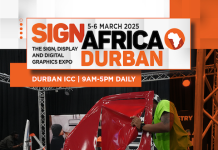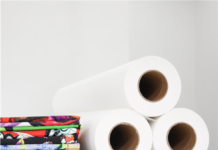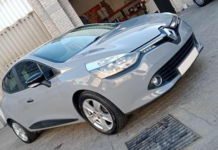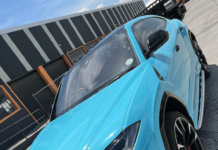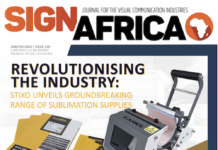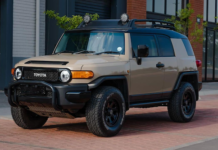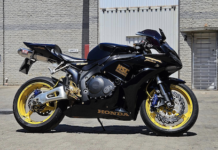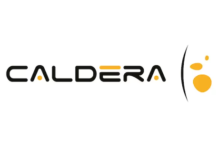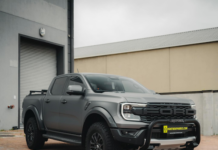Dan Antonelli, writing for SignCraft Magazine, says that nearly all of his company’s truck wrap designs first involve a brand redesign or building one from scratch. The nice thing about that is they get to start with a clean slate — unencumbered by layout and formatting issues, which may have made it harder to build an effective truck wrap. This article appears in Sign Africa Journal.
The advantage of building a new logo and truck wrap concurrently is that you can approach that task thinking about the canvas your new brand needs to live on. You can also plan accordingly for the other trucks in the client’s fleet, making sure as you design that the logo will be adaptable.
We probably didn’t approach logo design this way years ago. We usually designed the logo as a standalone first. Of course, we knew eventually it would go on the truck, but often it wasn’t sold with the wrap design. Today, nearly every client signs up for a new logo and truck wrap.
For most clients in the service-based industry, the vehicle is the single most important application of the brand. So it makes a lot of sense to make sure that new logo is built to fully take advantage of the canvas it’s being deployed on.
We use a traditional creative brief to help in our research to determine the direction the new brand will take and the competitive landscape the brand will compete against. And, of course, we want to know what the fleet will consist of.
As the sketch process begins to develop, we’re making rough sketches showing composition and placing them on the truck. At this stage we’re usually still in pencil drafts, with maybe some type to accompany it. As you work the elements and potential layouts, you can begin to envision whether or not the layout will work, or if you need to make adjustments based on spacing or possibly obstructions.
Obstacles To The Design
The biggest obstruction we run into is the dreaded slider rail on the passenger side of most newer vans. Many amazing layouts have never made it to fruition because of the slider rail. It usually wants to live smack in the middle of some important secondary copy. Often you can work around this by positioning secondary copy above or below it. But sometimes, especially on logos that use panel shapes, you’ve really got a challenge to figure out a way around it. Another obstacle is the moulding on the side of many vans.
This is a more recent development over the last three years or so. Previously, most service vans like the Chevy Express or Ford Econoline had no body side moulding. We’re often deploying large supergraphics, which ideally we’d want to span and bleed off the top and bottom. But moulding can present challenges, as most wrap installers do not want to print on top of moulding. So again, it’s another piece of the puzzle you’re contending with during the logo design process.
Lastly, of course, knowing the fleet you have to work with is very important. The differences between a high or low roof and short or long wheelbase will have significant impact on the use of the canvas. After altering elements of the brands for a long time, I think I was afraid of altering the proportions of mark and typography in a logo. Far too many brand guidebooks said that was a mistake. And far too many folks who wrote books on logo design also said you shouldn’t do that.
And the result of that advice? Poor layouts not effectively using the available space. But did the ‘rules’ apply here, or were they begging to be broken? Since I started breaking the rules, my wrap designs become so much more effective. I’m not talking about squishing or stretching elements.
Those are golden rules; they can’t be broken. But changing proportions and relationship of type and icons — well, we’re doing that all day long. And it works so well for vehicles: it just makes sense. One of the reasons you see many wraps fail is that the designer has been told you can’t amend the relationship between the mark and type. Don’t believe the hype. I think most of the rules advising against the practice originate from a print-centric mentality. And I get it. But print is a different medium than outdoor. The rules don’t apply the same way.
The Big 1000-Piece Puzzle
Be patient during your sketch process. Understand that it’s a lengthy process, that it is going to take a lot of back and forth, and plenty of finesse, to get all your elements to play nicely together. It may seem absurd, but we’re budgeting nearly 60 hours to develop a single brand and truck wrap. For a wrap, I may have as many as 40 variants before settling on what I think is the ideal solution.
Sometimes it comes early, but I still work on dozens of variants until I am absolutely convinced I’ve arrived at the right solution. Don’t rush the process. Great work doesn’t happen quickly.
This article was republished with permission from SignCraft Magazine. https://www.signcraft.com



